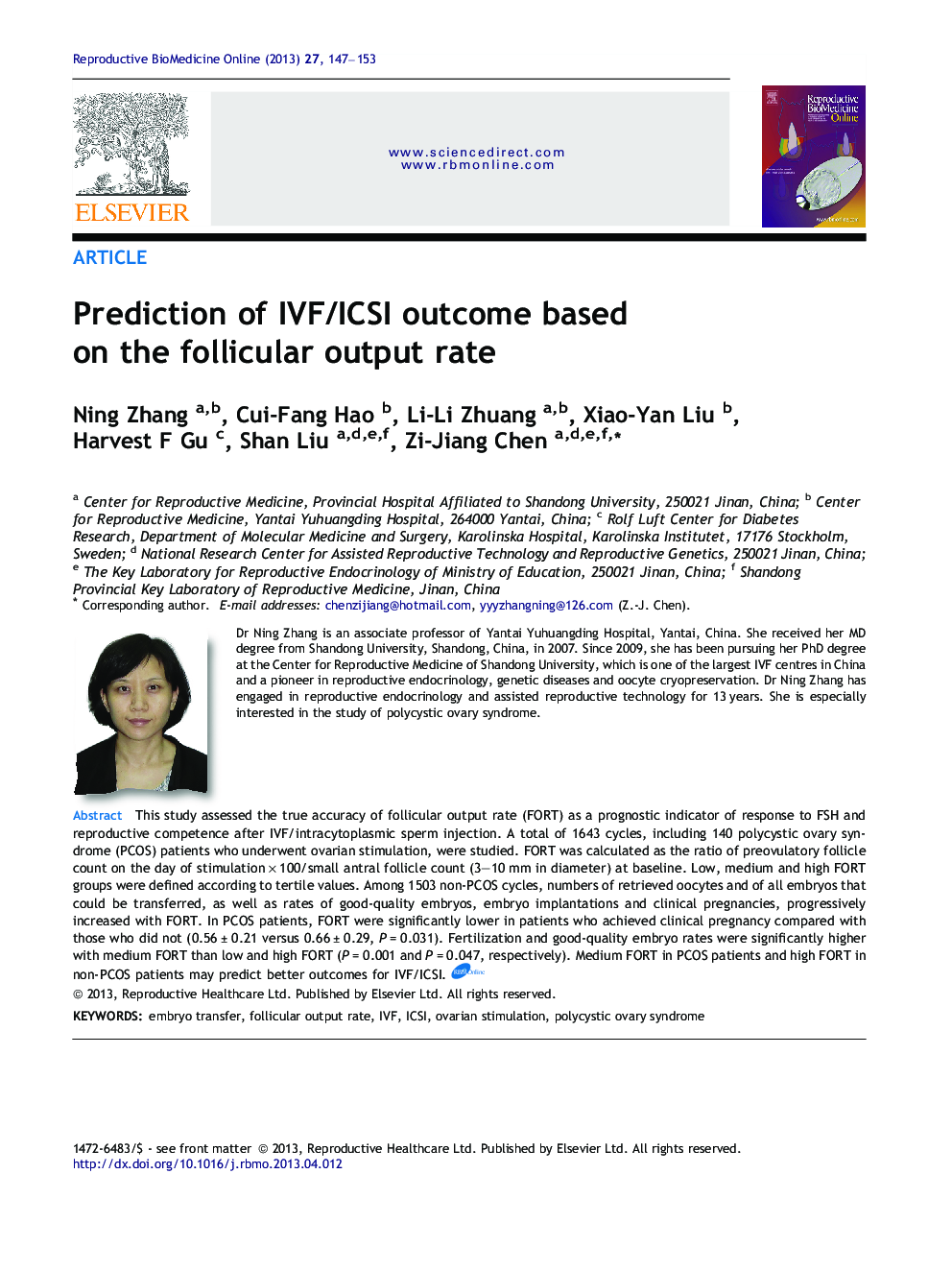| Article ID | Journal | Published Year | Pages | File Type |
|---|---|---|---|---|
| 3970310 | Reproductive BioMedicine Online | 2013 | 7 Pages |
This study assessed the true accuracy of follicular output rate (FORT) as a prognostic indicator of response to FSH and reproductive competence after IVF/intracytoplasmic sperm injection. A total of 1643 cycles, including 140 polycystic ovary syndrome (PCOS) patients who underwent ovarian stimulation, were studied. FORT was calculated as the ratio of preovulatory follicle count on the day of stimulation × 100/small antral follicle count (3–10 mm in diameter) at baseline. Low, medium and high FORT groups were defined according to tertile values. Among 1503 non-PCOS cycles, numbers of retrieved oocytes and of all embryos that could be transferred, as well as rates of good-quality embryos, embryo implantations and clinical pregnancies, progressively increased with FORT. In PCOS patients, FORT were significantly lower in patients who achieved clinical pregnancy compared with those who did not (0.56 ± 0.21 versus 0.66 ± 0.29, P = 0.031). Fertilization and good-quality embryo rates were significantly higher with medium FORT than low and high FORT (P = 0.001 and P = 0.047, respectively). Medium FORT in PCOS patients and high FORT in non-PCOS patients may predict better outcomes for IVF/ICSI.In the present study, we aimed to assess the true accuracy of the follicular output rate (FORT) as a prognostic indicator of the response to FSH and reproductive competence after IVF/intracytoplasmic sperm injection (ICSI). A total of 1643 IVF/ICSI cycles, including 140 polycystic ovary syndrome (PCOS) patients who underwent ovarian stimulation, were studied. FORT was calculated as the ratio of the preovulatory follicle count (PFC) on the day of human chorionic gonadotrophin stimulation × 100/small antral follicle count (AFC; 3–10 mm in diameter) at baseline. Low, medium and high FORT groups were defined according to the tertile values. Among 1503 non-PCOS cycles, the numbers of retrieved oocytes and of all embryos that could be transferred, as well as the rates of good-quality embryos, embryo implantations and clinical pregnancies, progressively increased from the lower to higher FORT groups. In PCOS patients, FORT was significantly lower in the patients who achieved clinical pregnancy compared with those who did not (0.56 ± 0.21 versus 0.66 ± 0.29, P < 0.05). Fertilization and good-quality embryo rates were significantly higher in the medium FORT group compared with the low and high FORT groups. The data from the present study suggest that medium FORT values in PCOS patients and high FORT values in non-PCOS patients may predict better outcomes for IVF/ICSI.
